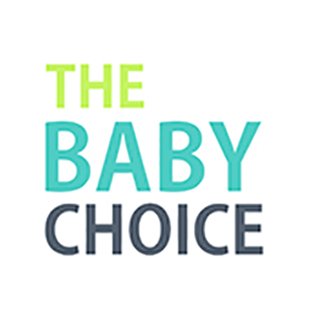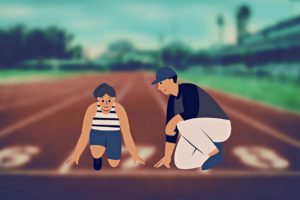Phonics is an essential aspect of early childhood education, and it plays a crucial role in enabling children to develop their reading and writing skills. Phonics involves teaching children the sounds that letters and combinations of letters make in words. The ability to recognize and produce sounds is a vital step towards developing reading fluency and comprehension.
One effective way of teaching phonics to kids is through songs. Catchy tunes and rhymes make learning more engaging and enjoyable, and they help children remember the sounds and words more easily.
This article explores ten phonics songs for kids that are designed to help children learn different sounds and patterns in English. The songs cover various phonics concepts, including vowels, consonants, blends, digraphs, and silent letters. Each song has a catchy tune, simple lyrics, and visual aids that assist children in understanding the sounds and words.
By incorporating these songs into their teaching practices, parents, teachers, and caregivers can make phonics learning more fun and effective for children.
Key Takeaways
- Phonics is essential for developing reading and writing skills in early childhood education.
- Songs are effective and engaging tools for teaching phonics concepts to kids.
- The ’10 Phonics Songs for Kids’ cover various concepts like vowels, consonants, blends, digraphs, and silent letters.
- Visual aids, games, and a variety of teaching methods can be used to reinforce phonics learning and make it more fun for children.
The Alphabet Song
The Alphabet Song is a widely recognized educational tool for teaching young children the sequence and sounds of the English alphabet. The song, also known as ‘The ABC Song’, was first copyrighted in 1835 by Charles Bradlee, a Boston-based music publisher.
The tune is based on the French song ‘Ah! vous dirai-je, Maman’which was popularized in the 1760s and has been used for various children’s songs around the world. The Alphabet Song is sung to the same melody as ‘Twinkle, Twinkle, Little Star’and ‘Baa, Baa, Black Sheep’, making it easy for children to learn and remember.
Over the years, the Alphabet Song has undergone various changes in lyrics and teaching techniques. Some variations include adding movements or actions to the song to engage children and help them learn the letters. Others have added additional verses to the song to teach phonics and sounds associated with each letter.
The song is often used in conjunction with visual aids such as flashcards and alphabet charts to reinforce letter recognition and sound association. Despite its variations, the Alphabet Song remains a popular and effective tool for teaching young children the fundamentals of the English alphabet.
The Vowel Song
One of the most fundamental building blocks of the English language, the vowel sounds, are reinforced through a memorable and engaging melody in the Vowel Song. This song is an effective tool for teaching vowel pronunciation and helping young learners develop an understanding of the individual vowel sounds.
The Vowel Song can be accompanied by a table that lists the vowel sounds along with their corresponding symbols. This table can serve as a visual aid for learners to associate the sounds with their written representations. By integrating this table with the melody of the song, children can develop a deeper understanding of the vowel sounds and improve their pronunciation skills. Overall, the Vowel Song is a valuable resource for educators who seek to make phonics learning more enjoyable and effective for young learners.
| Vowel Sound | Symbol |
|---|---|
| /æ/ as in cat | a |
| /e/ as in bed | e |
| /i/ as in sit | i |
| /o/ as in dog | o |
| /u/ as in cup | u |
The Consonant Blends Song
Utilizing a musical approach, the Consonant Blends Song is a valuable teaching tool for reinforcing the pronunciation of consonant blends and helping young learners develop a better understanding of the individual sounds in words. This song is specifically designed to teach consonant blends, which are two or three consonant sounds that appear together in a word without any vowel sounds in between. These are commonly found at the beginning or end of words, and the song features a variety of blends such as ‘bl,”cl,’and ‘dr.’
To effectively teach the Consonant Blends Song, educators can follow these tips:
Begin by introducing the concept of consonant blends and providing examples of words that contain them such as ‘black,”clap,’and ‘drive.’
Play the song for the class and encourage students to sing along.
After listening to the song, provide opportunities for students to practice pronouncing consonant blends by having them read words containing blends aloud.
By incorporating the Consonant Blends Song into their teaching, educators can help young learners develop strong phonics skills, which are crucial for reading and writing success.
The Silent E Song
An effective approach to teaching young learners about the influence of silent E in changing the pronunciation and meaning of words is through the use of the Silent E Song. The song helps children understand the basic silent e rules and exceptions, which can be a tricky concept to grasp. Through catchy tunes and repetition, the song makes it easy for children to remember how silent e can change the sound of a word and how it affects the meaning of a word.
To further reinforce the concept of silent e, teachers can incorporate fun activities such as word games, puzzles, and flashcards into their lesson plans. These activities can help children identify silent e in words, practice reading and writing words with silent e, and develop their phonemic awareness. With these activities combined with the Silent E Song, children can have a fun and engaging learning experience while mastering the concept of silent e.
The Digraph Song
The Digraph Song is a powerful tool in teaching young learners about the combination of two letters that make a new sound in words. A digraph is a combination of two letters that make a single sound. This song helps students learn the correct digraph pronunciation and helps them identify common digraph words in reading and writing.
The Digraph Song is a catchy tune that makes learning fun for children. By singing along, children can learn digraphs such as ‘sh,”ch,”th,”ph,’and ‘wh’and how they are used to make new sounds in words.
The song also helps children identify common digraph words such as ‘shop,”chip,”thin,”phone,’and ‘whale.’By learning these digraphs and words, children can improve their reading and writing skills and become more confident learners.
The R-Controlled Vowels Song
One effective method for teaching young learners about the sounds of r-controlled vowels is through the R-Controlled Vowels Song. This song is a catchy tune that can help children learn about the five r-controlled vowels, which include ‘ar,’ ‘er,’ ‘ir,’ ‘or,’ and ‘ur.’
By singing along to the song, children can improve their reading and pronunciation skills, as well as their ability to recognize words that contain r-controlled vowels. Common words with r-controlled vowels include ‘car,’ ‘bird,’ ‘horn,’ ‘surf,’ and ‘burn.’ These words can be challenging for young learners to read and pronounce correctly, which is why the R-Controlled Vowels Song can be a helpful tool.
When teaching r-controlled vowels to young learners, it is important to provide plenty of opportunities for practice and repetition. Teachers can also incorporate games and activities that involve r-controlled vowels, such as word sorts or word hunts. By using a variety of teaching methods, children can develop a strong understanding and mastery of r-controlled vowels.
The Long Vowels Song
Utilizing a musical approach to teaching vowel sounds, the Long Vowels Song is an effective tool for improving reading and pronunciation skills. This song focuses on the long vowel pronunciation, which is when a vowel sound is pronounced for a longer duration than its short vowel counterpart.
By listening and singing along with the Long Vowels Song, children can better distinguish between short and long vowel sounds, and apply this knowledge to reading and spelling.
To further reinforce long vowel pronunciation, the Long Vowels Song provides examples of long vowel words. These examples are divided into the five main long vowel sounds: A, E, I, O, and U.
The following is a list of examples for each long vowel sound:
- Long A: cake, gate, name, tape, wave
- Long E: bee, deep, feet, meet, tree
- Long I: bike, hi, kite, mile, time
- Long O: boat, bone, coat, nose, vote
- Long U: cube, flute, mule, tune, use
By associating long vowel sounds with specific words, children can better internalize the sounds and apply them to their own reading and writing.
The Long Vowels Song is an effective learning tool that combines fun and education, helping children to develop essential reading and pronunciation skills.
The Short Vowels Song
Employing a melodic approach to teaching vowel sounds, the Short Vowels Song is a valuable tool for enhancing reading and pronunciation abilities. Short vowel sounds are the sounds that are produced when a vowel is pronounced in a short, quick manner. These sounds are crucial in the English language as they help distinguish between similar words such as ‘cat’ and ‘cut’. Teaching short vowels through music can be an effective way to help children learn these sounds and improve their reading skills.
Short vowel sounds activities can be incorporated into the classroom or home environment using the Short Vowels Song. The song uses catchy lyrics and repetitive sounds to help children learn and retain the sounds of short vowels. In addition, the use of music can help engage children who may struggle with traditional teaching methods. By associating the sounds of short vowels with a fun and memorable tune, children may be more likely to remember and recognize these sounds when reading and speaking. Overall, incorporating music into the teaching of short vowel sounds can be a fun and effective way to improve children’s reading and pronunciation abilities.
| Short Vowel Sound | Example Words |
|---|---|
| a | hat, cat, bat |
| e | bed, met, red |
| i | pin, sit, dig |
| o | top, hot, box |
| u | cup, sun, fun |
Table: Examples of Short Vowel Sounds and Example Words.
Frequently Asked Questions
How long should kids listen to phonics songs each day?
Research suggests that incorporating phonics songs into daily routines can have numerous benefits for children’s language development. Consistent exposure to phonics songs can help children learn the sounds of letters and words, which can in turn improve their reading and writing skills. However, the amount of time that children should listen to phonics songs each day is not clear-cut and may vary depending on the child’s age and attention span.
Some experts recommend that young children listen to phonics songs for 10-15 minutes a day, while others suggest that older children can benefit from longer listening sessions of up to 30 minutes. Ultimately, it is important to find a balance that works for the child’s individual needs and preferences, while also ensuring that they are getting enough exposure to phonics songs to reap the benefits of this engaging and effective learning tool.
Can phonics songs be used as the sole method of teaching reading?
Using phonics songs as the sole method of teaching reading has both pros and cons. On one hand, phonics songs can be an effective tool for teaching phonemic awareness and improving reading fluency. They provide an engaging and fun way for children to learn and practice letter sounds and blends.
In addition, phonics songs can be used to reinforce other reading skills such as decoding and comprehension. On the other hand, relying solely on phonics songs may have limitations. Children may struggle to transfer the skills learned through songs to other reading contexts, such as reading books.
Furthermore, using only phonics songs may not provide enough variety or depth in instruction, leaving gaps in children’s understanding of reading concepts. Therefore, while phonics songs can be a useful tool in teaching reading, they should be used in conjunction with other teaching methods to ensure comprehensive instruction.
Are there any recommended age ranges for using phonics songs with children?
Phonics songs have been found to be effective in teaching children how to read. However, there is no one-size-fits-all approach when it comes to using phonics songs with children. Recommended age ranges for using phonics songs with children vary depending on the child’s developmental stage, and their individual learning needs and abilities.
Phonics songs can be effective with different age groups, from early childhood to primary school age. Younger children may benefit from simpler songs that focus on basic letter sounds, while older children may benefit from more complex songs that incorporate blends and digraphs.
Ultimately, the effectiveness of phonics songs in teaching children to read depends on how well the songs are incorporated into a comprehensive reading program that addresses all aspects of reading development.
How can parents or educators make phonics songs more interactive for kids?
To make phonics songs more interactive for kids, parents and educators can use props and incorporate movement into the learning process. The use of props, such as flashcards or pictures, can help children connect the sounds they hear with the letters they see.
Incorporating movement, such as having children act out the sounds or do a dance to the song, can also help engage children and make learning more fun. Including phonics songs in a multi-modal approach to teaching literacy, which combines visual, auditory, and kinesthetic learning, can be beneficial in promoting language development and literacy skills.
By making phonics songs more interactive, children can have a more enjoyable and effective learning experience.
Are there any phonics songs available in languages other than English?
Phonics song benefits are numerous, and they have been found to be an effective tool for teaching young children the sounds of language. These songs not only help children learn the sounds of letters and words, but also improve their reading and writing skills.
While most phonics songs are available in English, there are also popular non-English phonics songs that are used in other countries. For instance, in Japan, the ‘Aiueo song’ is a popular phonics song that helps children learn the sounds of the Japanese alphabet. Similarly, the ‘Arabic Alphabet Song’ is a widely-used phonics song in Arabic-speaking countries.
Using phonics songs in various languages can be an effective way of teaching children the sounds and structure of language and can help them develop strong language skills.
Conclusion
Phonics is an essential component of early childhood education, and songs can be a fun and engaging way to introduce and reinforce phonetic concepts.
The 10 phonics songs mentioned in this article cover a range of sounds, including vowels, consonant blends, digraphs, and r-controlled vowels.
Each song has a catchy tune that can help children remember the sounds and their corresponding letters.
Learning through music is a powerful tool for young learners, as it helps to create a multisensory learning experience.
These phonics songs can be used in the classroom or at home to support children’s phonetic development.
By incorporating them into daily learning routines, educators and parents can help children improve their reading and spelling skills in a fun and enjoyable way.

















